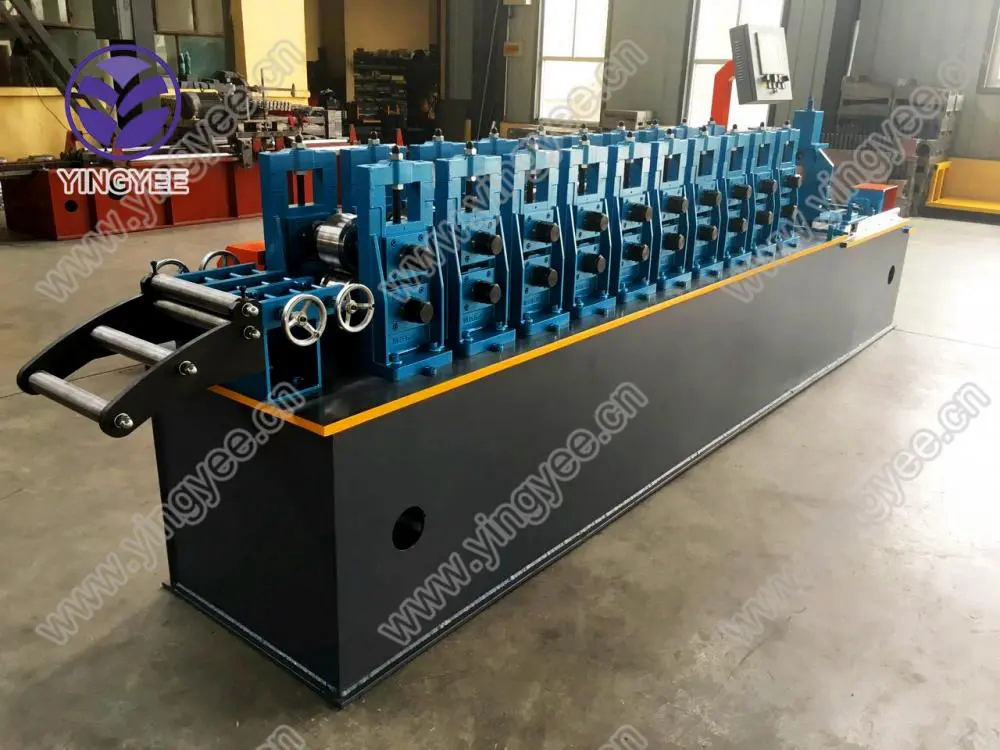
Understanding IBR Profiles and Double Layer Roofing Forming Machines
The construction industry has seen significant advancements in technology, particularly in the production and application of roofing materials. One such innovation is the IBR (Inverted Box Rib) profile, a roofing design that has gained popularity due to its strength, versatility, and aesthetic appeal. To manufacture these profiles, the double layer roofing forming machine plays a crucial role.
The IBR Profiles
IBR profiles are characterized by their unique design, featuring a series of inverted box ribs, which enhance structural integrity and load-bearing capacity. These profiles are often made from galvanized steel, which not only provides durability but also resistance to corrosion. The ribbing allows for better water runoff, making it suitable for various weather conditions. Consequently, IBR roofing is frequently used in commercial buildings, warehouses, agricultural structures, and even residential homes.
The aesthetic quality of IBR profiles cannot be overlooked; their sleek design is visually appealing and can enhance the overall look of a building. Available in a variety of colors, IBR roofing can be customized to meet the specific design requirements of a project.
Double Layer Roofing Forming Machines
To produce IBR profiles efficiently, manufacturers utilize double layer roofing forming machines. These machines are designed to create two different profiles in a single run, thereby optimizing production time and material usage. This dual-functionality is especially advantageous in a fast-paced construction environment where time and cost-effectiveness are paramount.
How Do They Work?
The double layer roofing forming machine consists of several key components, including the feeding system, rollers, and cutting system. The process starts when raw materials, usually in the form of metal coils, are fed into the machine. The rollers then shape the metal into the desired profile. This is where the precision of the forming machine comes into play, as it determines the exact dimensions and quality of the finished product.
Once the desired profile is formed, the cutting system ensures that the roofing sheets are cut to the required length, ready for installation
. The ability of these machines to produce two different profiles without requiring additional time for setup is a significant advantage, allowing manufacturers to cater to varied customer needs without compromising on efficiency.
Advantages of Using Double Layer Forming Machines
1. Efficiency These machines significantly reduce the time and labor required to produce roofing sheets. The ability to switch between profiles allows manufacturers to meet diverse project demands swiftly.
2. Cost-Effectiveness By producing two profiles concurrently, manufacturers can save on raw material costs and reduce waste, making it a more economical choice.
3. Space Saving Given that a double layer forming machine occupies less space compared to having two separate machines, it is ideal for production facilities with limited floor space.
4. Quality Control Modern double-layer machines are equipped with advanced technology that ensures consistent quality across all produced sheets, reducing the chances of defects.
Applications of IBR Roofing
With the enhanced capabilities of double layer roofing forming machines, the applications of IBR profiles have expanded significantly. These profiles are used in industrial applications, including factories and warehouses, where strength and durability are essential. They are also increasingly found in residential constructions, particularly in modern homes that require stylish yet practical roofing solutions.
Furthermore, IBR roofing is popular in the agricultural sector for barns and storage facilities due to its ability to withstand harsh weather conditions. Its excellent water drainage properties help protect these structures from water damage, prolonging their lifespan.
Conclusion
As the construction industry continues to evolve, the demand for efficient and durable roofing solutions remains high. The combination of IBR profiles and double layer roofing forming machines represents a significant stride in meeting this demand. By understanding the benefits and applications of these innovations, manufacturers and builders alike can make informed decisions that contribute to the creation of durable, aesthetically pleasing, and efficient structures. The future of roofing is undoubtedly bright, with technologies like these leading the way.